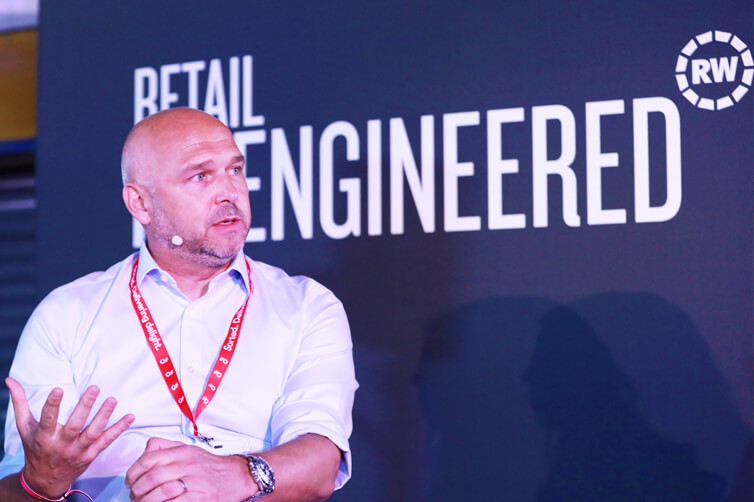
We talk to retailers about this. A lot.
Everyone seems to be a bit confused about the idea of digital transformation, and the pressure to put a nice green tick next to each transformation project.
But we’re never going to actually complete it, are we? It’s not an achievable thing. ‘Digital transformation’ is a fictitious finish line that has retailers losing their heads when it comes to building strategies and plans.
It’s spoken about all the time, but what does it actually mean?
If it’s a journey, rather than a destination, who holds the map?
For our stage session on day two of Tech., we asked that very question.
The brilliant Paul Eastman (Head of IT, A.S. Watson Group) took to the Retail Re-engineered stage with us, to share his fascinating insight and give a powerful view on how IT works at a company as impressive as his.
Alongside our very own Andy Hill (Sales Director) and Lisa Byfield-Green (Head of Insight, Retail Week), Paul discussed the right (and wrong) attitudes to have when it comes to digital transformation.
Even in the opening moments of the session, Paul banished the myth that ‘digital transformation’ is an albatross around the neck of the IT team. “Leaders and Execs, and right down to the teams at the coal face; everyone needs something to head towards and hang on to. If that end goal is branded as ‘digital transformation’, then that works.”
Andy agreed. He said that there doesn’t need to be an end point or expiry date on DT as a whole, because it’s a work-in-progress and a constantly moving feast. If that’s what everyone rallies behind, so be it. However, there is a risk of deflation and disheartening if the illusion of a finish line is used as a carrot.
So who buys the carrots? Wait, that doesn’t make sense.
Who decides the direction and who manages the milestones?
Well, it has to come from business demand.
A.S. Watson works to understand the desired customer outcome, and then works back from that. Customers don’t care about your big ERP system change, if it doesn’t deliver what they want.
That said, Paul notes that the IT department should no longer ask for budget – the need for a project can come from another department, such as a customer facing team, that shows the demand and sets the requirements. Then, tech teams collaborate and support in delivery.
By constantly reviewing plans, assessing what’s changed and working together to adapt ideas, every stakeholder is invested and engaged throughout.
Finally, the session wrapped up with Lisa asking the pair about the focus areas for change that will have the biggest impact on the customer. Paul noted that, following the A.S. Watson project to launch 30 minute pick-from-store, the supply chain is a hotbed for innovation within the business.
Andy agreed, noting that customers increasingly want to dictate delivery options, rather than be told what is convenient for them.
“Yes, we can order a pizza and have it in 30 minutes – so yes, the infrastructure is there. But that doesn’t mean that universally works for our industry. Quickest isn’t always the most convenient delivery option, so we shouldn’t be hung up on same-day and next-day,” says Andy. “Customers want to have the flexibility to say what works for them, so I think delivering to their standards will be a huge challenge for retailers – particularly the ones that are slow to act when it comes to tech.”
So, in answer to the question, digital transformation does exist. But it’s not something we’re going to solve any time soon. Or at all. And peace needs to be made with that. Pressure needs to be alleviated, as it can be causing us to ask the wrong questions. We shouldn’t fixate on the concept of delivering a business DT project. We need to be asking what tech changes we can make to better serve our customers in the way they want to be served right now.